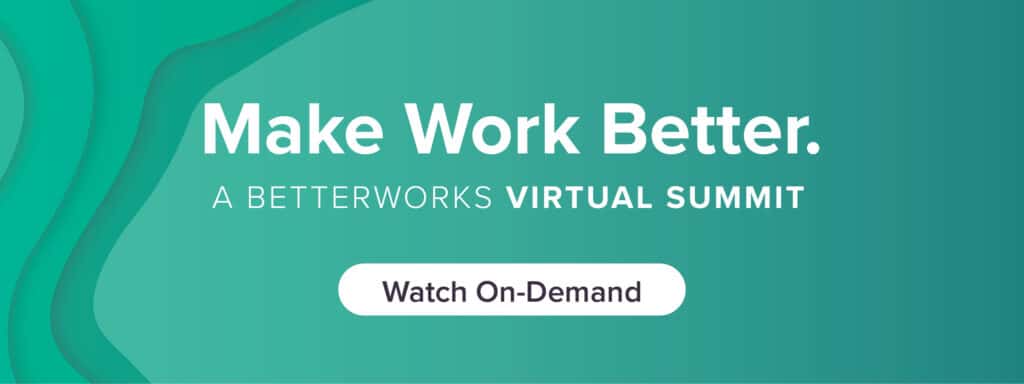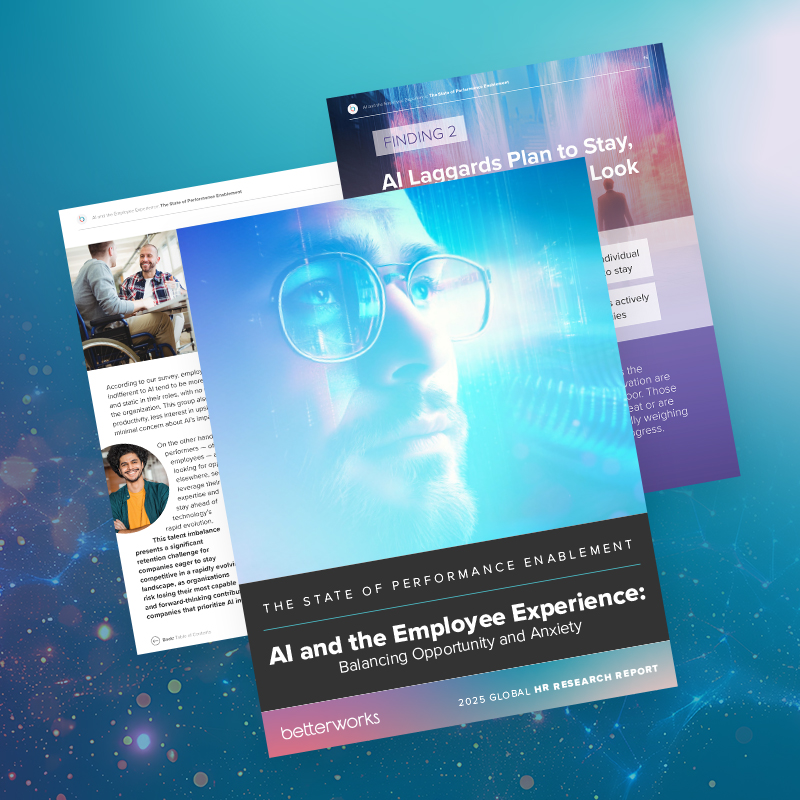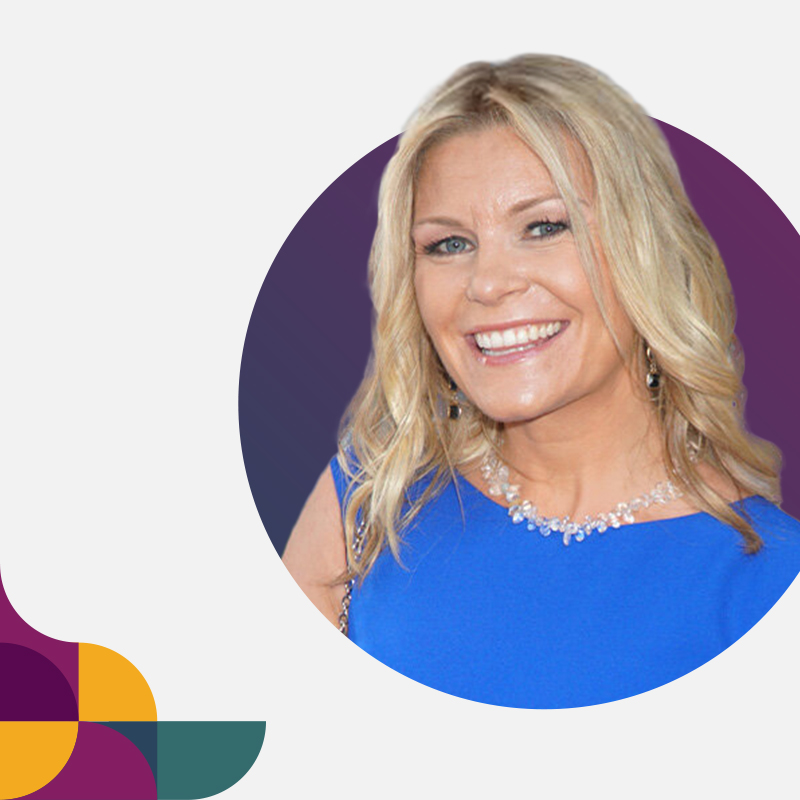I have never seen a moment quite like this.
In the 25 years I’ve been helping companies with organizational development, cultural transformation, and engagement strategies, I’ve not seen a confluence of disruption, challenge, and mindset shift of the magnitude we have today. All of it presents an opportunity for businesses to evolve into a higher form of existence and purpose. Beyond the buzz phrases we all tend to use, like “transformational,” “the future of work,” and “employee-first,” there is now a truly unique convergence of business needs, strategic insight from HR, and workforce realities that requires us to find ways to make work — finally — work for everyone. To make work better.

What is ‘Make Work Better’ about?
It’s more than a marketing tagline at Betterworks. It’s tied to the Betterworks belief system and reflects the way our own employees work: Internally, we use every part of the solution that we provide to our customers. But, Make Work Better extends beyond these borders, comprising the notion that all of us in HR have the opportunity – and I would say, the responsibility — to seize upon the multitude of current challenges and evolve them into new approaches that put people squarely at the center.
The reality is that even if your company has an incredible product or service, unparalleled vision, and the business fundamentals to dominate your market, without “people fundamentals,” you won’t make it to the top and you won’t be able to sustain brand leadership.
The pandemic and the shift to hybrid and remote work bubbled up many of the workplace problems that have existed for years and amplified them. Everything seemed to wash ashore like one rogue wave: lack of diversity and inclusiveness, bias in its many forms, well-being, work-life balance versus integration, distrust, psychological safety, transparency, autonomy, agency, career development, poor support for managers, the need for strategic alignment and visibility across the organization, skills deficiencies, opacity of existing skill sets within companies, and the mismatch of skills and people to the work to be done. Only the wave isn’t rogue. This is not a point in time that will pass, but rather a clarion call to fix work.
There is now a truly unique convergence of business needs, strategic insight from HR, and workforce realities that requires us to find ways to make work — finally — work for everyone. To make work better.
Neither is this a moment for despair. If you can zoom out from the uncertainty and unease, you will see this as a moment for all of us to appraise what no longer works, get rid of what’s broken, and think afresh about what’s needed for everyone to flourish in the future. It’s a time for optimism, a time to lock arms with employees and managers to design what they have been asking for — an approach to managing performance in a mutually beneficial way that enables everyone to do their work with greater clarity, efficiency, collaboration, and support.
WATCH: Responding to the Great Resignation and Shaping the Future of Work
HR is at core of helping business and employees succeed
HR leaders have been at the center of the upheaval, developing workarounds and longer-term solutions to help get work done. They’ve been on the frontlines of employee crises and solutions, and seen firsthand the struggles and triumphs of managers and their teams. They’ve witnessed how workplace issues that have existed for years have impacted corporate bottom lines and brands, and they’ve advocated for employee-centered approaches. HR has collected all manner of quantitative and sentiment-oriented employee data that, when compiled and analyzed, can help tell a story about what to fix and why.
If you’re in HR, now is not the time to sit on the sidelines and watch other functions lead this transformation. It’s time, rather, to lead your team — all the stakeholders — down the field by strengthening the link between profit, people, and performance in this new world of work. It’s time to build resilience, agility, and transparency into business structures and processes by enabling these same capabilities in your employees — including managers — in their everyday work.
READ: Ryan Estis: This is a cry for better leadership
Start with the stakeholders to make work better
We’ve made significant strides, especially on the health and wellness side. I would say we still have a ways to go when it comes to performance management. Modern performance management focuses on enabling performance, strategic alignment, and business agility. All of these tie into making work meaningful and helping people to be productive and feel more accomplished, valued, and engaged. These, of course, lead to greater retention.
We can start by looking at what each stakeholder group wants —business leaders, HR, managers, and employees.
Visibility for executives
Business leaders need greater visibility — into what’s happening with workforce productivity and employees’ views about the company. As Betterworks Advisory Board member and HR Analyst Josh Bersin puts it, “If you’re the CEO of a big pharmaceutical company, or Sundar Pichai at Google, and there’s 175,000 employees, you see the costs going up but the revenue not going up as fast. You’re going to think, ‘How come we’re falling behind?’ What he wants is visibility. He wants to know where they are behind — which departments, groups, products, geographies….He wants to know why so he can put his attention on those areas.”
Efficiency and data for HR
HR wants to be more efficient so that it can focus on high-value strategic initiatives rather than administrative tasks and processes. The ability to leverage employee data compiled across the organization to tell a story is also important. HR can help executives see how changing people processes delivers better business outcomes. For example, data can reveal how enabling employees and teams to align and adjust their goals with the strategic goals of the business can drive empowerment and engagement that ultimately benefit the company. Likewise, data can show how regular check-ins with managers to discuss performance and development lead to better job satisfaction and retention.
Coaching and support tools for managers
Managers want frameworks, practical tools, and guidance to be effective team leaders, especially with the complexities of hybrid and remote work. Their roles are shifting from managing to coaching, requiring a new set of skills to enable their direct reports to achieve their work goals and development aspirations, and feel like valued members of the team. With so much attention on the influence that managers have on employee retention, managers want tools to help them foster connection, improve collaboration, and promote employee development.
Connection, guidance, and recognition for employees
Employees want to see how their contributions matter. They want to know that managers and co-workers have their back and can support them in accomplishing their work. They need guidance to break through barriers and challenges, and to prioritize and reprioritize activities as business requirements shift so that they can focus on what really matters. Employees want to be recognized and fairly rewarded for their efforts. They expect managers to understand and support their aspirations, providing opportunities and tools for ongoing development. And all this, of course, happens under the umbrella of relationships and connection.

Modern performance management makes work better
To give these stakeholders what they need, we must evolve performance management into performance enablement. Traditional performance management is broken and almost universally despised, a point Josh makes in his new book, “Irresistible.” He has told the story of how one large company spent over $1 million annually on performance management, had a nine-step calibration process, and spent nearly the entire month of December on performance reviews. When the company surveyed employees to learn what single activity they’d shed, the number one answer was, overwhelmingly, “performance management.”
WATCH: Webinar with Josh Bersin — Enabling Performance in the Flow of Work
Traditional performance management is a 70-plus-year-old process that was designed as a competitive assessment to rank employees and weed out non-performers. While many organizations have been evolving to more of a coaching and development model, the transformation is incomplete and must evolve further in light of employees’ new needs and expectations.
“People are tired and burned out; 81% say they’re overworked,” Josh says. “Now the leader of one of the largest companies says productivity has to improve. There’s a big disconnect between what executives believe their employees should do and what employees are feeling.
“This is a design problem. You can’t just give people more money and think that’s going to solve it,” he says. “What we need is a new operating system.”
So what is the right answer? With so many working hybrid or remotely, communication with managers and teammates is tougher, meaning peoples’ signals get “misaligned,” according to Josh. It’s more difficult for a team or an employee to keep their goals aligned with the strategic goals of the organization and to have the transparency into the goals of other groups that’s often needed in a complex environment. In an era of continual business disruption, business strategies are always subject to change, in turn requiring employees to readjust what they’re working on. And, of course, relationships can become more easily strained when the workforce is distributed and virtual.
It’s time to build resilience, agility, and transparency into business structures and processes by enabling these same capabilities in your employees — including managers — in their everyday work.
In such an environment, managers, teams, and individual contributors have to find ways to clearly communicate, stay on track, maintain culture, and support and cheer each other on. And, they expect to be able to do this easily and with minimal friction. This means that conversations, constructive feedback, guidance, alignment and realignment, and connections have to happen in the flow of work — in the applications people use everyday. What’s more, these processes must be fair and promote individuals’ aspirations. They should encourage BHAGS (big, airy audacious goals) and innovation, be data-driven, and continuous. Essentially, we’re talking about an integrated solution that puts more of the responsibility for performance in the hands of employees in an empowering way that becomes an everyday habit.
This holistic approach is precisely what Betterworks is trying to solve with its comprehensive and enterprise-ready solutions for performance management — or what we call, performance enablement.
READ: Building Culture and an Employee-First Experience at the University of Phoenix
The next step for HR
You have the power to transform your business and the experience of work for your employees. You have the power to drive business results and lead your executive teams successfully through transformation. You have the power to make work — finally — work for everyone.
Let’s tear down the barriers and challenge ourselves to adopt a mindset of abundance when it comes to enabling resilient, agile, and engaged employees. Let’s make work better together.
I have never seen a moment quite like this.









